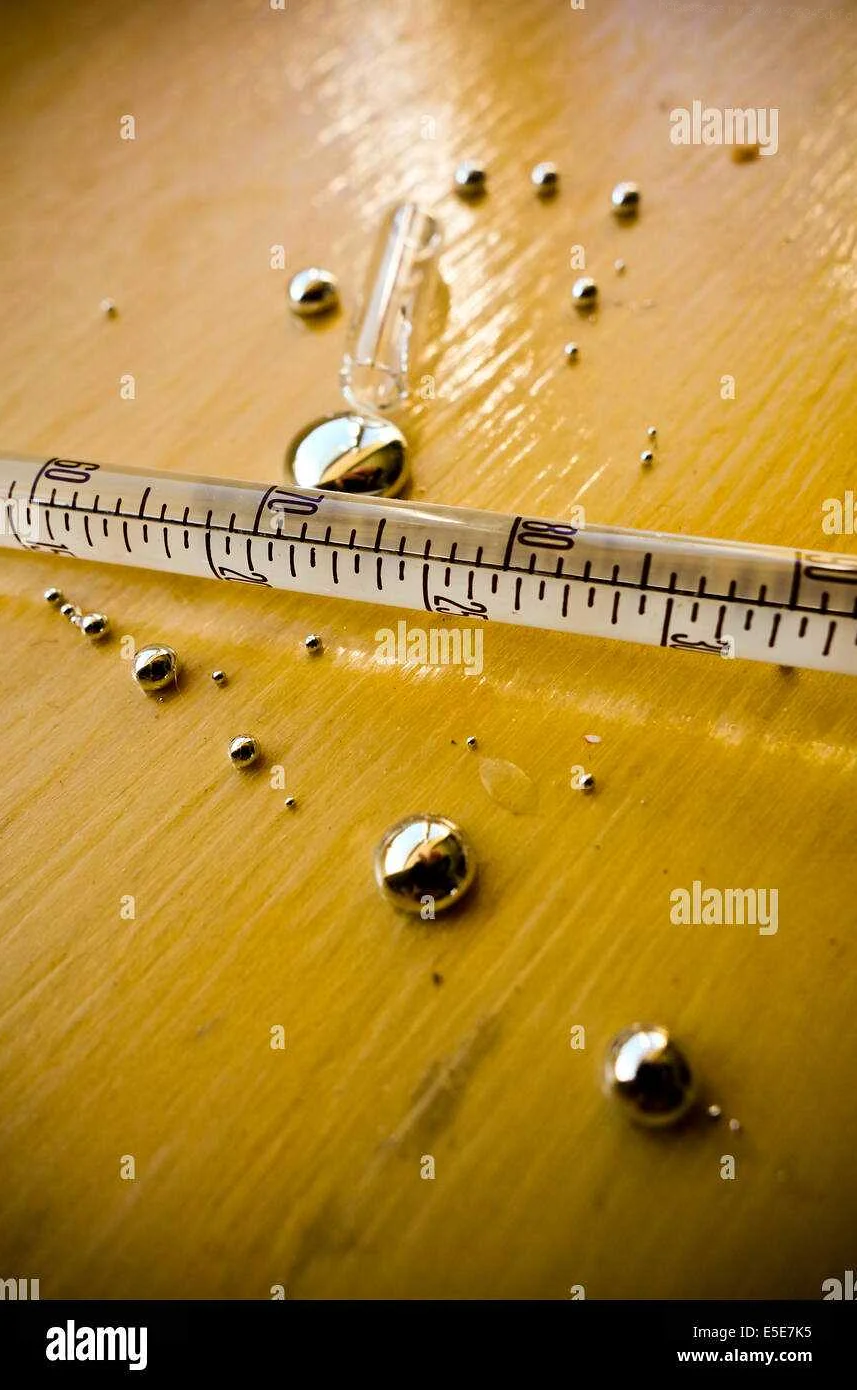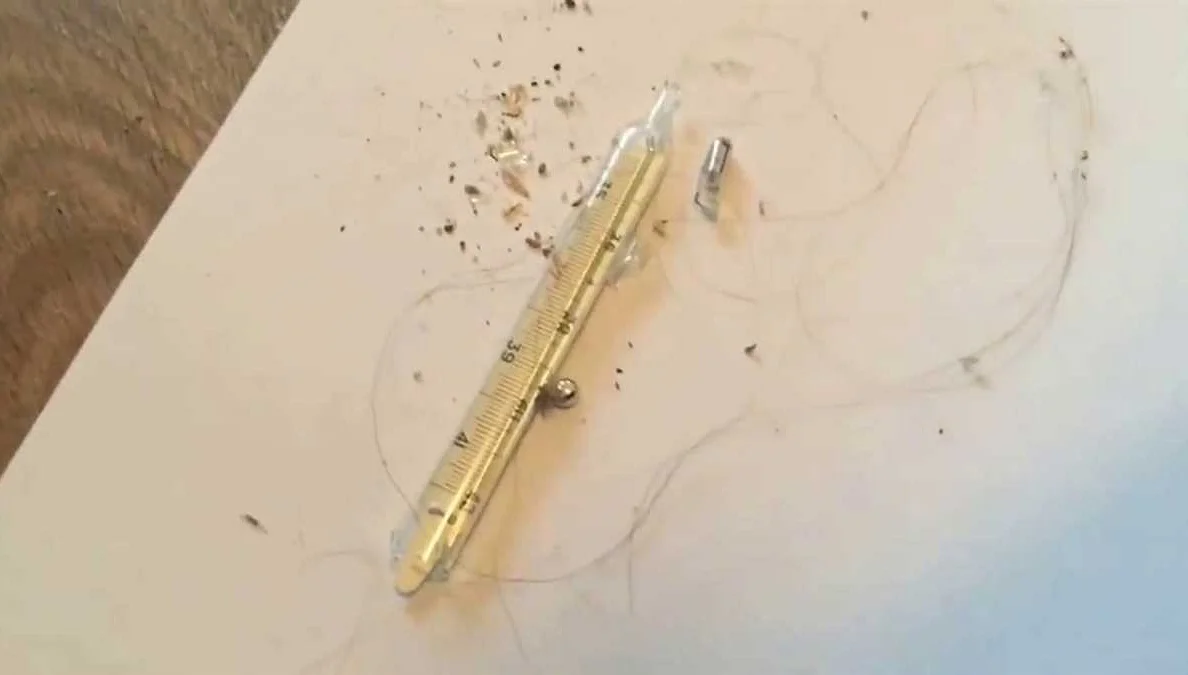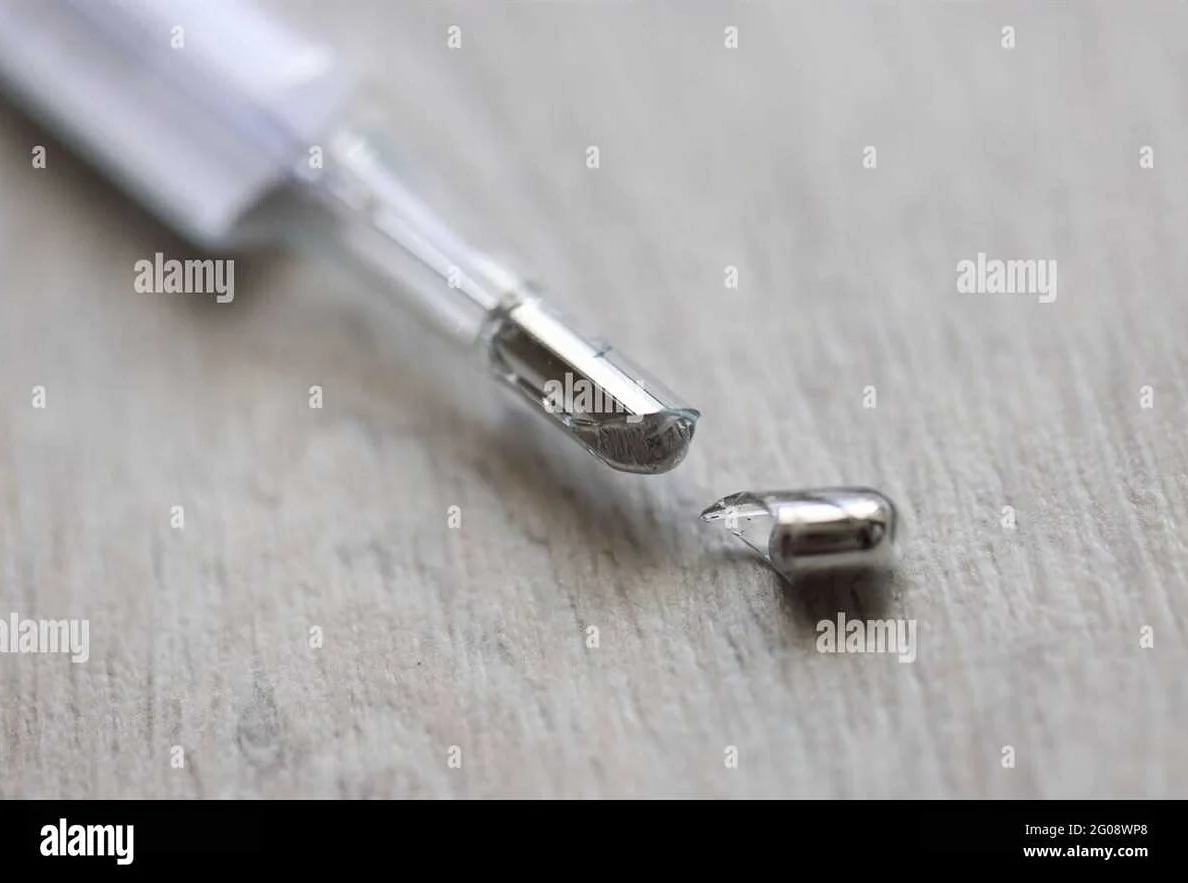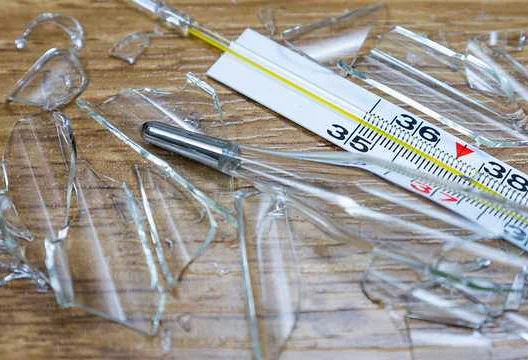The mercury thermometer broke
Содержимое
Learn what to do if your mercury thermometer breaks and how to safely clean up the mercury spill to prevent exposure to harmful mercury vapors.
Mercury thermometers have been used for many years to measure temperature accurately. However, the use of mercury in these thermometers poses a significant risk to human health and the environment. If a mercury thermometer breaks, it can release toxic mercury vapors into the air, which can be harmful if inhaled.
Mercury is a highly toxic element that can cause serious health issues, especially if exposure occurs over a prolonged period. Inhalation of mercury vapors can lead to respiratory problems, neurological disorders, and even damage to vital organs such as the brain and kidneys. Pregnant women, infants, and young children are particularly vulnerable to the harmful effects of mercury.
It is crucial to handle a broken mercury thermometer with utmost caution to minimize the risk of mercury exposure. If a thermometer breaks, it is important to ventilate the area by opening windows and turning on fans. Avoid touching the broken glass or mercury with bare hands. Use gloves or a plastic bag to carefully gather all the broken pieces. Do not use a vacuum cleaner, as it can spread mercury vapors further.
Proper disposal of the broken thermometer and its contents is essential to prevent environmental contamination. Contact your local waste management facility to inquire about the proper procedure for disposing of mercury-containing thermometers. Never pour mercury down the drain or throw it in the regular trash, as it can contaminate water sources and harm wildlife.
In conclusion, the dangers associated with a broken mercury thermometer should not be underestimated. Immediate action is necessary to minimize exposure and ensure proper disposal. It is also advisable to switch to safer alternatives, such as digital thermometers, which do not contain mercury. By being vigilant and responsible, we can protect ourselves and the environment from the hazards posed by mercury.
The Health Risks

Mercury is a highly toxic substance that poses significant health risks when exposed to humans.
When a mercury thermometer breaks, it releases small droplets of mercury vapor into the air. Inhalation of these vapors can lead to serious health problems, especially for children, pregnant women, and individuals with compromised immune systems.
Exposure to mercury vapor can cause respiratory issues, such as difficulty breathing, coughing, and chest pain. It can also affect the nervous system, leading to symptoms such as memory loss, irritability, and tremors.
Ingesting mercury, either through contaminated food or touching a broken thermometer and then touching the mouth or food, can also be harmful. It can lead to gastrointestinal issues, kidney damage, and even death.
It is important to take immediate action if a mercury thermometer breaks to minimize exposure and prevent any potential health risks. This includes evacuating the area, ventilating the space, and contacting a professional for proper cleanup and disposal.
Remember, it is crucial to handle and dispose of mercury thermometers properly to protect yourself and others from the health hazards associated with mercury exposure.
Environmental Impact

The improper disposal of a broken mercury thermometer can have severe environmental consequences. Mercury is a toxic substance that can cause serious harm to both humans and wildlife. When a mercury thermometer breaks, the liquid mercury can be released into the environment, where it can contaminate soil, water, and air.
Mercury is a persistent pollutant that does not break down easily and can accumulate in the food chain. This means that even small amounts of mercury can have far-reaching effects on ecosystems and human health. Mercury can be absorbed by plants and animals, and as it moves up the food chain, it can become more concentrated, reaching dangerous levels in larger predators.
In humans, exposure to mercury can lead to a range of health problems, including neurological damage, kidney damage, and respiratory issues. Children and pregnant women are particularly vulnerable to the toxic effects of mercury, as it can affect their developing brains and nervous systems.
To minimize the environmental impact of a broken mercury thermometer, it is important to handle and dispose of the mercury properly. This includes using gloves and protective clothing when cleaning up a spill, and storing the mercury in a sealed container for proper disposal.
Additionally, it is essential to educate the public about the dangers of mercury and promote the use of safer alternatives. Non-mercury thermometers, such as digital thermometers, are widely available and pose no risk of mercury contamination.
By taking these precautions and promoting awareness, we can help protect the environment and ensure the safety of future generations.
Proper Cleanup Procedures

When dealing with a broken mercury thermometer, it is crucial to take proper cleanup procedures to ensure the safety of yourself and those around you. Mercury is a toxic substance that can cause serious health risks if not handled correctly. Here are the steps you should follow for proper cleanup:
1. Evacuate the area: If a mercury thermometer breaks indoors, make sure to evacuate the area immediately. Open windows and doors to allow for ventilation.
2. Protect yourself: Put on protective gloves and a face mask before starting the cleanup process. Avoid touching the mercury with bare skin or inhaling the fumes.
3. Gather necessary materials: You will need a mercury spill cleanup kit, which typically includes a mercury-absorbent powder, a brush, a scoop, and a sealable container.
4. Carefully collect the mercury: Use the brush and scoop provided in the cleanup kit to collect the mercury beads. Be careful not to break them into smaller pieces, as this will increase the risk of exposure.
5. Sprinkle the absorbent powder: Sprinkle the mercury-absorbent powder on any remaining mercury beads. This powder will help to bind the mercury and make it easier to collect.
6. Use the brush to sweep: Gently sweep the mercury-absorbent powder and any remaining beads into the sealable container using the brush provided. Avoid using a vacuum cleaner, as it can spread the mercury particles in the air.
7. Seal and label the container: Once all the mercury has been collected, seal the container tightly and label it as containing hazardous materials. This will ensure that it is handled properly during disposal.
8. Contact your local authorities for disposal: Contact your local environmental protection agency or waste management department to inquire about proper disposal methods for mercury-containing materials.
9. Clean and decontaminate: After the cleanup is complete, thoroughly clean and decontaminate the area using soap and water. Dispose of the gloves, face mask, and any other contaminated materials properly.
By following these proper cleanup procedures, you can minimize the risks associated with a broken mercury thermometer and ensure the safety of yourself and those around you.
Safe Disposal Methods

Proper disposal of a broken mercury thermometer is crucial to prevent harm to human health and the environment. Mercury is a toxic substance and can cause serious health issues if not handled appropriately. Here are some safe disposal methods to follow:
| 1. Contact Local Authorities | Check with your local waste management or environmental agency to find out the specific guidelines for mercury disposal in your area. They will provide you with information on how to safely dispose of the broken thermometer. |
| 2. Use a Mercury Cleanup Kit | Mercury cleanup kits are available for purchase and contain all the necessary tools for safely collecting and disposing of mercury. These kits typically include gloves, goggles, a mercury-absorbent powder, and a sealable container for proper storage and disposal. |
| 3. Do Not Vacuum or Sweep | Never use a vacuum cleaner or broom to clean up a broken mercury thermometer. This can cause the mercury to become airborne and spread throughout your home. Instead, use tape or a specialized mercury cleanup tool to carefully collect the spilled mercury. |
| 4. Seal and Label | Once you have collected the broken thermometer and any spilled mercury, carefully seal it in a leak-proof container. Be sure to label the container as “Mercury Waste” to alert others of its contents. |
| 5. Contact Hazardous Waste Facility | If you are unable to safely dispose of the broken thermometer on your own, contact a hazardous waste facility in your area. They are trained in handling and disposing of mercury-containing items and will ensure proper disposal. |
Remember, proper disposal of a broken mercury thermometer is essential for protecting both yourself and the environment. Follow these safe disposal methods to minimize the risk of mercury exposure and contamination.
Alternatives to Mercury Thermometers

Given the potential dangers associated with a broken mercury thermometer, it is important to explore alternative options that are safer and more environmentally friendly. Fortunately, there are several alternatives to mercury thermometers that are readily available and just as effective.
1. Digital Thermometers: Digital thermometers use electronic sensors to measure temperature and display the results on a digital screen. They are quick, accurate, and easy to read. Digital thermometers are widely used in both medical and industrial settings.
2. Infrared Thermometers: Infrared thermometers use infrared technology to measure temperature without physical contact. They can be pointed at an object or person from a distance, making them ideal for situations where contact is not feasible or desired. Infrared thermometers are commonly used in food service, HVAC, and automotive industries.
3. Galinstan Thermometers: Galinstan is a non-toxic liquid metal alloy that is a safe alternative to mercury. Galinstan thermometers function similarly to mercury thermometers, but without the associated risks. They are typically used in scientific research and industrial applications.
4. Alcohol Thermometers: Alcohol thermometers use alcohol instead of mercury to measure temperature. The alcohol is typically colored and rises and falls in a visible tube to indicate temperature. Alcohol thermometers are commonly used in laboratory and educational settings.
5. Thermocouple Thermometers: Thermocouple thermometers utilize two wires made of different metals that generate a small voltage when there is a temperature difference. This voltage is converted into a temperature reading. Thermocouple thermometers are frequently used in industrial and engineering applications.
When considering an alternative to a mercury thermometer, it is important to choose a device that meets your specific needs and requirements. Additionally, ensure that the alternative thermometer is properly calibrated and maintained for accurate temperature measurement.
By transitioning to alternative thermometers, we can reduce the potential risks associated with mercury and contribute to a safer and healthier environment.